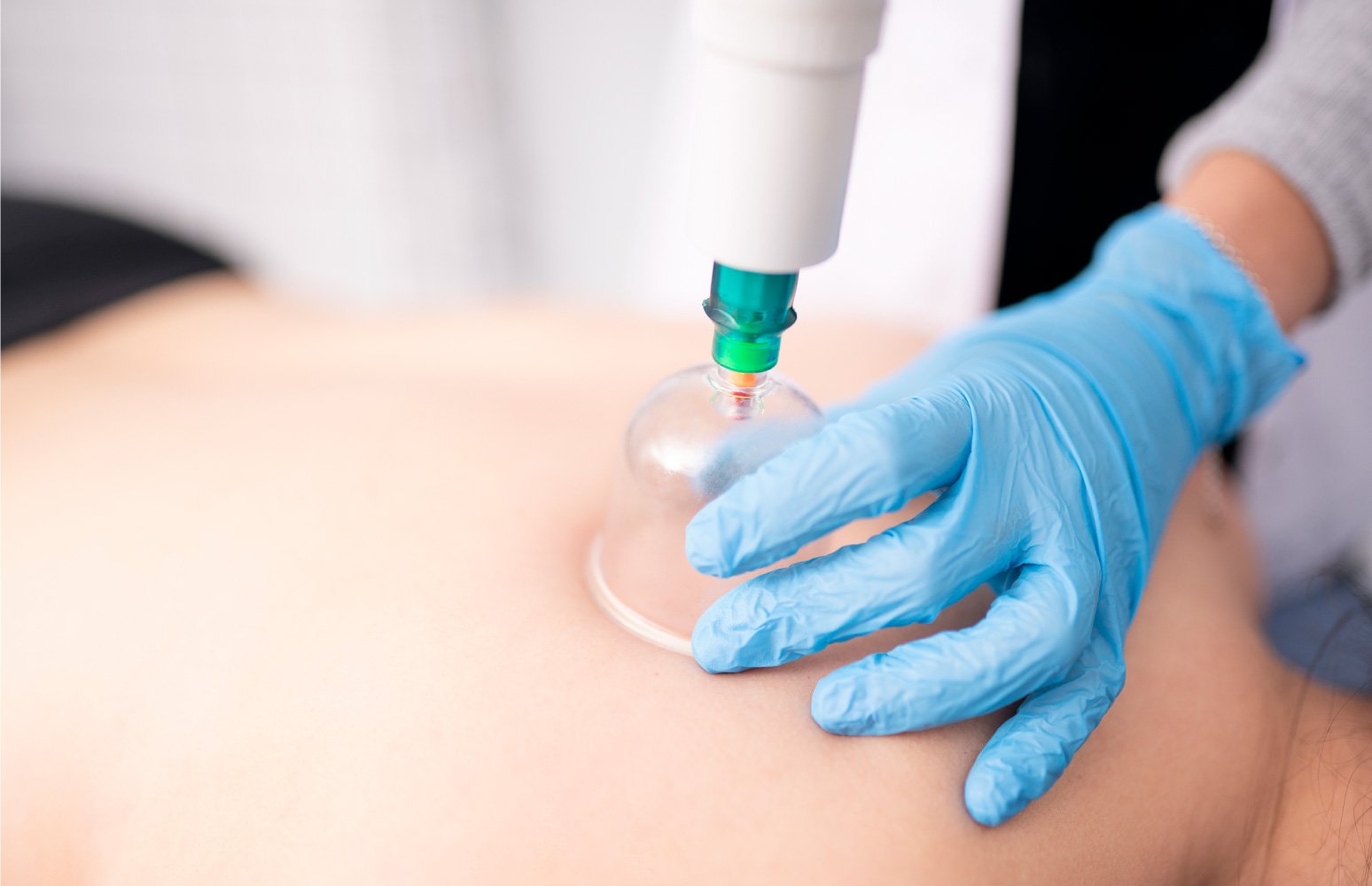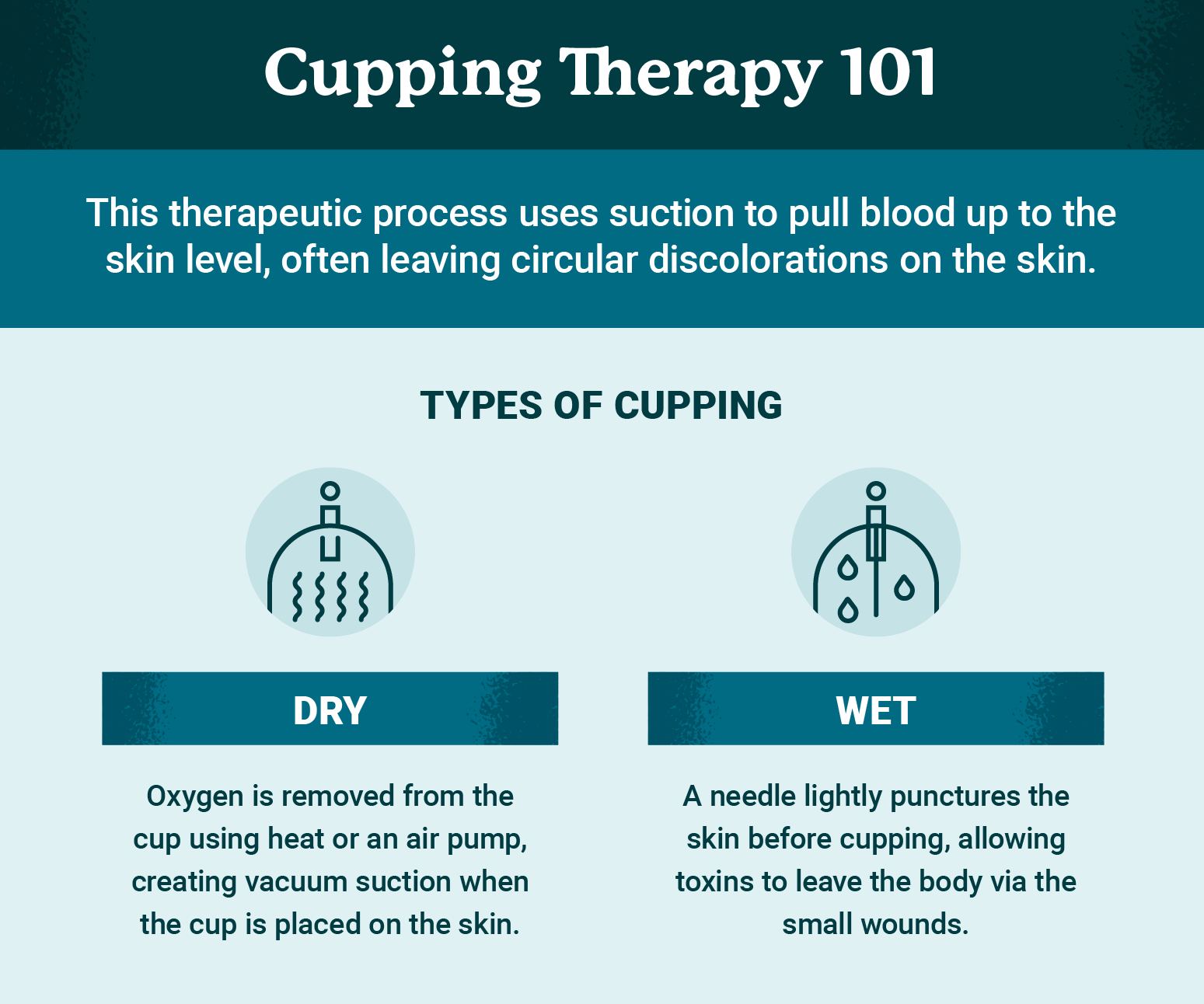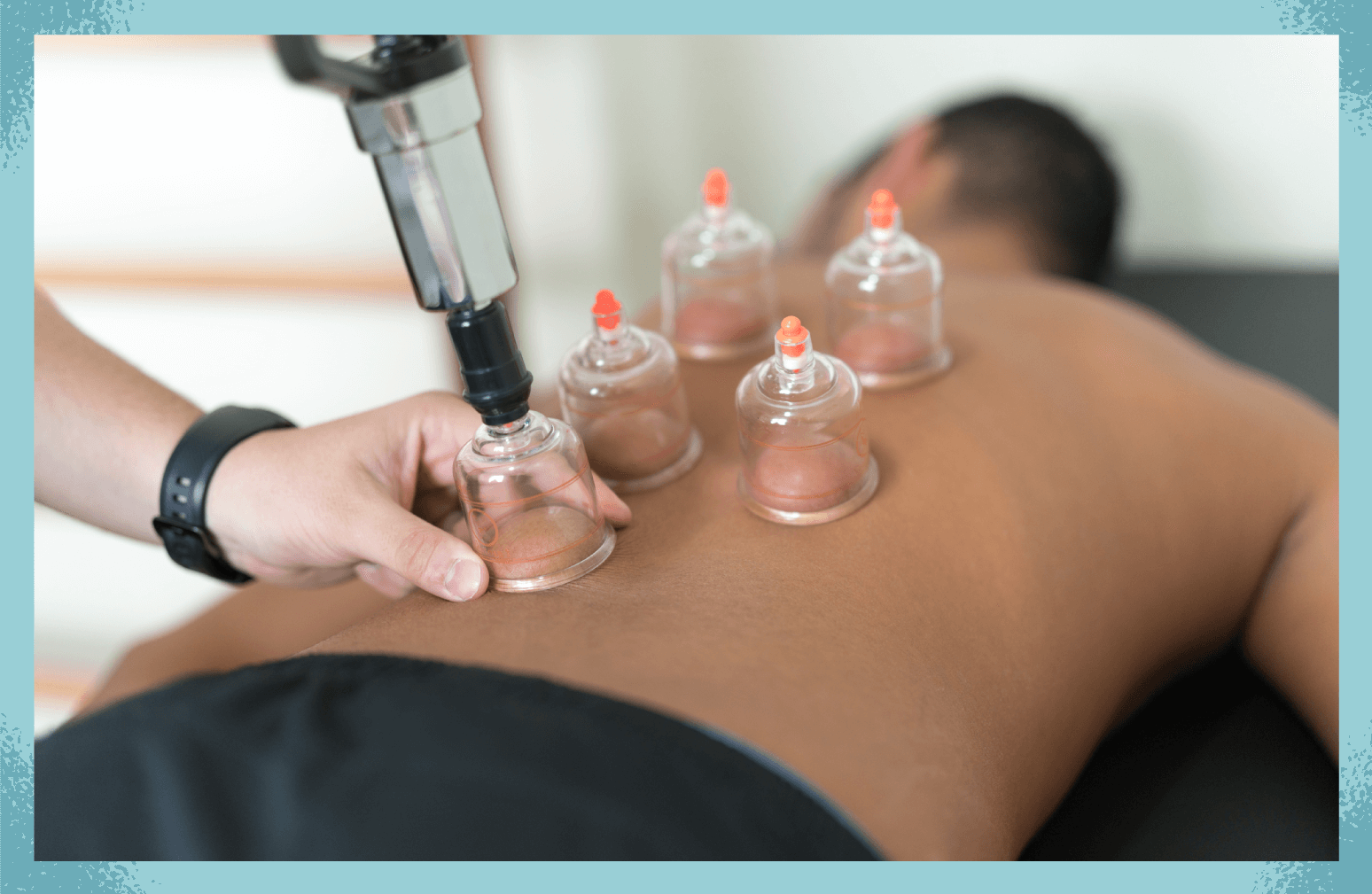

Beyond these two main methods, there are a variety of cupping practices to explore, including:
- Needle cupping: In this combination of acupuncture and cupping, acupuncture needles are first applied, and cups are then placed over each needle.
- Massage cupping: After creating the suction, the therapist moves the cups across the skin.
- Facial cupping: Small silicone cups are placed on the face to assist with rejuvenating and detoxifying the skin.
- Water cupping: One-third of each cup is filled with warm water, then inverted onto the skin for suction.
How Does Cupping Therapy Work?

The driving theory for how cupping works is that the suction involved encourages improved circulation, thus promoting healing and reducing pain.
Your cupping session will vary slightly based on which treatment you’ve selected. The practitioner will ask you to lie face down or face up on a table, depending on the area to be treated.
In a dry cupping process known as “fire cupping therapy,” the practitioner uses a flammable substance—such as herbs, alcohol, or paper—that they place in the cup and then light on fire. Once the fire extinguishes itself, the practitioner quickly places the cup upside down on the area needing treatment. A vacuum is created as the air inside the cup cools and raises the skin within the cup opening.
The same suction effect can be achieved with modern cups featuring air pumps that allow the practitioner to control the amount of air removed from within.
Some therapists leave the dry cups in place for approximately 3 minutes and then remove them, while others opt to massage or stretch the area by briefly moving the cup.
In wet cupping, also known as “hijama,” the practitioner places the cups on the skin before making any needle piercings or cuts. After several minutes of suction, the cup is removed so that the practitioner can administer small cuts to the raised skin to release blood and toxins. The therapist may use pressure to speed the blood flow before placing another cup over the location for several more minutes.
The cupping process is typically not painful, creating only mild discomfort. Writing about his experience with fire cupping, one journalist reported, “I couldn’t see the flame with my head buried in the massage board, but I could feel the heat. I winced and tensed. I needn’t have bothered; it was painless.”9

Scientists have researched the benefits of cupping over the years from a variety of angles. A 2018 report found that wet cupping may help clear excess heavy metals from the blood, having an excretory effect on the kidneys. And evidence shows that it can be an effective treatment for those suffering from neck pain, a health condition that is the second most significant cause of chronic disability worldwide.


 CHINESE
CHINESE ENGLISH
ENGLISH










 Skype Chat
Skype Chat WhatsApp
WhatsApp  Mail inquiry
Mail inquiry
